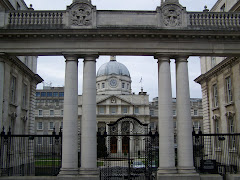
That was a bizarre episode as we were at the Shaanxi History Museum but instead of going round it as we had kind of supposed was what we were there to do, we were taken through it, out a back entrance, down some steps, past the service areas underneath the museum, and finally into a basement that only permits visitors by appointment to see this very rare and delicate collection. The frescoes from the tomb of Prince Zhang Huai were fascinating depicting for example the Chinese playing polo,

and also hunting with their tamed pet leopards sitting in baskets behind them as they rode their horses. Photography strictly forbidden but well worth checking out on the net.
Back to silk. Our guide showed us the whole process of making silk from the silk worm cocoons* onward to the finished products and in particular to the rugs. The woman we saw at her loom had been making silk rugs for the past 22 years. The detail in these rugs was extraordinary and although I have seen it with my own eyes it is still impossible to believe that these beautiful carpets are made entirely by hand. A 6 foot by 4 foot rug would cost (with discount at factory prices) from around £450 for a fairly basic pattern, which was about £150 more than the weaver we saw earns in a year. Not good.

The scale of the construction going on in Shanghai is impossible to describe, but when the Chinese decide something is going to get done within a particular time scale it gets done within that particular time scale (see the preparations for the Beijing Olympics as one example). Next year Shanghai hosts the World Expo Exhibition** and is busy transforming the city ahead of that. Just one example: The Bund is down by the river and is a very popular destination for tourists. The local government has decided that given the massive influx of visitors expected for next year (70 million of them) The Bund will not be wide enough to accommodate all the tourists who will wish to stroll down it. Solution – widen the pavement all the way across the road, and build a new road underneath where the current one is. And that is exactly what they are doing right now. There is not a shadow of a doubt that it will be ready on time.
Most of the workers in the construction industry, like the weaver mentioned too, are migrant workers. In the Chinese context migrant means they come from further west in China and they are paid a pittance in what ever work they do. Exploitation of the workforce isn’t confined to capitalist countries.
* Countless silkworm cocoons in China but none go to waste. Any that aren't used in the silk industry get eaten. I still haven't got on to the subject of food have I? Some interesting little delicacies we came across, that I must remember to mention soon.
** Worth checking out if only for the fascinating 'Announcement on the Solicitation of the Third Round of Catering Service Providers for the Public Areas of the Site of Expo 2010'. Those Chinese love their short snappy titles.






No comments:
Post a Comment